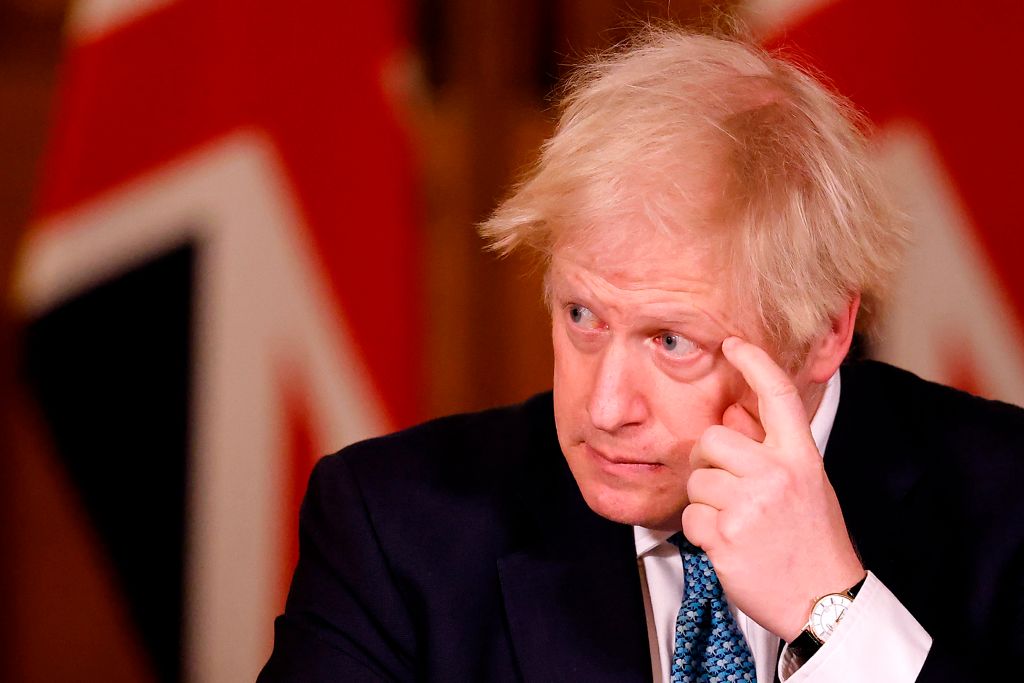If social care reform were any deeper in the long grass of political priorities, it’d probably get mistaken for a hedgerow. It got a one-line reference in the Queen’s Speech this week, which does not even guarantee that the ‘clear plan’ promised by the PM in his first speech in the job will be published this year. Announcing ‘a long-term plan for social care reform this year’ has been a quaint annual government ritual since 2017.
The Queen’s Speech also mentioned the need to clear the NHS backlog. Delays for treatment, already widespread before Covid-19 due to a decade of NHS funding increases lagging behind demand, are now the worst since reliable record-keeping began in 2007.
And house prices are playing in to both of these problems. Yes, really.
First up is the role of Inheritance Tax (IHT) and the cost of homes. Former chancellor George Osborne introduced the pensions taper tax in 2015, in order to offset reduced income from his tax changes (family homes passed between parents and children were exempted from IHT, up to a total value of £1 million).
Revenue lost here was recouped by reducing the annual allowance for pension contributions of £40,000 to a floor of £10,000 for those with ‘adjusted’ annual incomes of £150,000 to £210,000. That ‘adjusted’ income figure includes employer pension contributions (usually higher for NHS workers than for those in the private sector, as the NHS pension is a ‘defined benefit’ scheme).
Staff with a ‘threshold income’ over £110,000 can thus fall into the ‘taper zone’. Most senior hospital consultants and GPs’ wages start from around £77,000: many found themselves at risk of triggering the taper tax and big, unforeseeable retrospective tax bills (particularly if they do extra shifts or private practice).
Perhaps the government’s reluctance to grasp this thorny issue shouldn’t come as much of a surprise
This is a big problem, because there is going to be no way of clearing the backlog of NHS waiting lists without persuading these senior people to do extra sessions in the evenings and at weekends. (Oh, and many of these people are also very tired indeed and some traumatised by the massive demand from the peaks of the Covid-19 pandemic.)
It’s an economic Catch-22 – ‘you can have more money to do waiting list sessions, but you’ll lose it all (and more) to the pensions taper tax’. It needs fixing.
When Boris Johnson became PM in July 2019, he promised ‘we will fix the crisis in social care once and for all with a clear plan we have prepared to give every older person the dignity and security they deserve’.
It’s nearly mid-2021, and no such plan actually exists, as 10 Downing Street Press Secretary Allegra Stratton confirmed back in March. Recent Number 10 media briefings suggest that the PM has started to support the Dilnot Commission reform proposals (see below).
The Government has claimed that plans for social care were delayed by efforts to seek a cross-party consensus. Chancellor Rishi Sunak tried this line in the Budget media round back in March, causing Labour’s shadow care minister Liz Kendall to observe ‘this has not been discussed or even raised with me by any minister. Despite my regularly asking.’
Lib Dem shadow health lead Munira Wilson confirmed this, adding that she has ‘written to the PM and others twice in recent months requesting cross-party talks, but no response’. SNP health lead Dr Philippa Whitford hammered home the point: ‘(We) have certainly not heard anything from Matt Hancock.’
Perhaps the government’s reluctance to grasp this thorny issue shouldn’t come as much of a surprise. Social care has been the poor relation of public policy for a long time. There’s a predictable rhythm: politicians or official commissions recommend that it be put onto a basis of more stable funding with a greater contribution from taxpayers; followed by warm if imprecise words from the Government of the day, which either denies the case for change or pushes reform far off into the future. That, or electoral defeat.
This was seen with the Royal Commission On Long-Term Care For The Elderly, which produced 1999’s ‘With Respect To Old Age’. This report recommended to New Labour that the costs of long-term care should be split between living costs, housing costs and personal care. Personal care should be available after assessment, according to need and paid for from general taxation: the rest should be subject to a co-payment, according to individuals’ means.
The Blair government slipped out its response (a ‘no’) as an appendix to 2000’s ‘The NHS Plan’ introducing the major decade-long NHS reforms and funding increases.
Labour’s next attempt at reform was Andy Burnham’s 2010 proposals for a National Care Service, which aimed to provide social care on the same basis as NHS care – free at the point of need. There would be individual contributions via various options including a ten per cent levy on estates: the Conservatives’ health spokesman Andrew Lansley dubbed it a ‘Death Tax’.
In 2011, the Dilnot Commission recommended to the Coalition Government that an individual’s contribution towards the costs of their care (excluding general living costs) should be capped at between £25,000 and £50,000, recommending the cap be set at £35,000. The asset threshold above which people in residential care are liable for the full cost of their care should be increased from the current £23,250 to £100,000.
Chancellor George Osborne raised the individual contribution level to £72,000, and deferred implementation, first until 2016 and the until 2019. The departure of the Cameron/Osborne leadership on the Brexit referendum result removed that option.
PM Theresa May tried her own proposals in her 2017 election manifesto, which suggested that those needing social care should fund entire cost, with their estates able to retain no more than £100,000 in assets. Labour returned the 2010 compliment, calling this plan a ‘dementia tax’.
So it seems that the PM finally has a plan (Dilnot’s, from 2011). But it’s not being taken forward. Why not?
The answer to this is about the Chancellor’s concerns. The Treasury spent much of last week hitting back in a war of media briefings, mainly to the Telegraph (former star columnist: one B Johnson Esq). The suggestion was that the Dilnot cap/floor arrangement, if set at around £100,000, is over-generous to wealthy, high-value house owner-occupiers in the south, while potentially taking the entire estate of less high-value house owner-occupiers in areas such as the ‘Red Wall’ seats that gave the Government its commanding majority.
The Treasury also argued that if this proposal goes ahead, they will need tax rises to fund its likely £8-10billion annual costs. This, they point out, will breach their 2019 manifesto promise not to raise any of the ‘big three’ taxes: income, VAT and National Insurance.
The PM’s personal authority is clearly strengthened by the Conservatives’ strong performance in last week’s various elections. He may therefore be in a good position to choose which promise he should break: his social care plan one, or the one not to raise taxes.






Comments